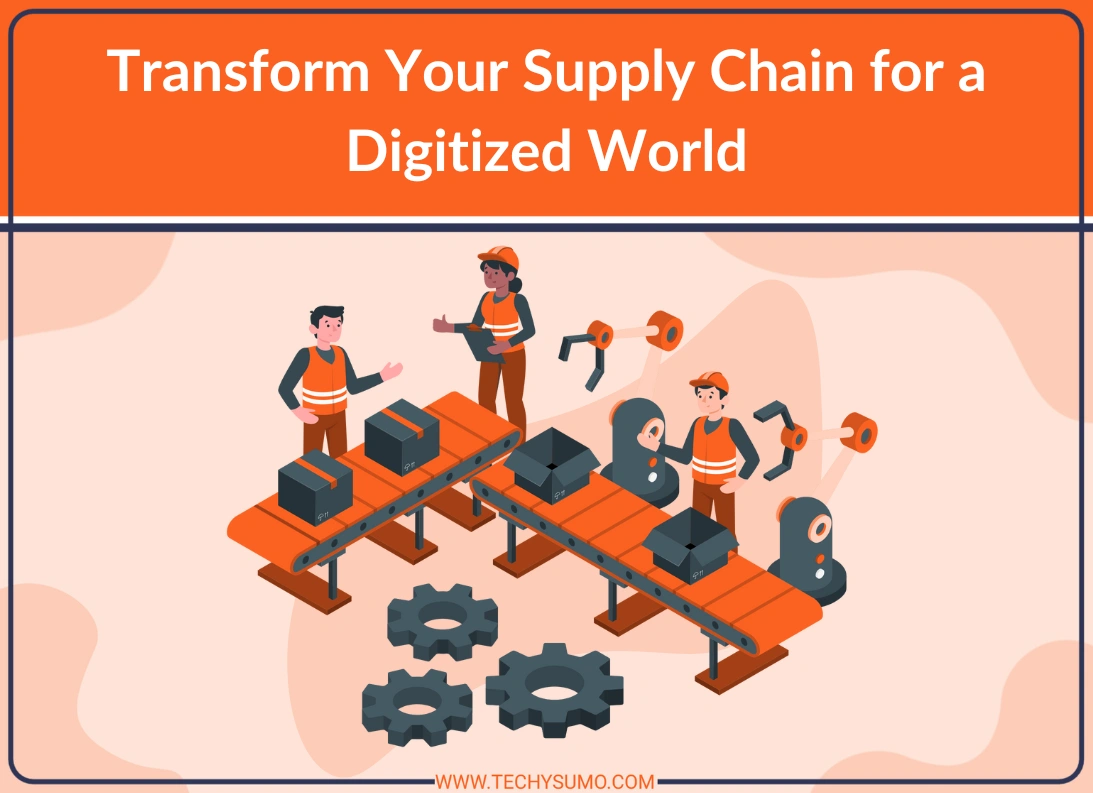“Digital transformation” is the buzz term of the past decade for the corporation. They all herald it, but none of them actually deliver it. And for supply chains, it’s even worse: boards call for transformation, by marketing departments for new-age technologies, pilot projects proliferate. Very few, however, achieve successful implementation, succumbing to slide shows and prototypes that don’t scale.
Not technology itself. We have procurement for cloud, automation, predictive analytics, and artificial intelligence available to us today. The issue is leadership—shaping processes, culture, and thinking strategically so transformation becomes a success for a longer duration.
More than 80% of digital transformation initiatives fail to reach their objectives (thirdstage-consulting.com). Several of those failures are rooted in leadership blunders instead of technological faults. Here’s a leadership playbook: how to lead fantastic digital change through supply chain management, how to bypass common pitfalls, and how to create sustainable advantage.
Table of Contents
What Does Digitization Really Mean for SCM?
Supply chain digitalization is not turning off whole systems, it’s changing decision-making from reactive to prescriptive, processes from manual to mechanized, and value from cost reduction to competitive advantage.
Procurement, often lagging in transformation, progresses from spreadsheet, weekly audit, and administrative workflow to real-time insight, contextual notification, and automation of source. Supply chains learn, adapt, and consistently optimize themselves.
Also Read
Transformation should be aligned on three pillars:
- Process digitization: Digitization of routine work for unleashing human energy
- Data integration: Break down silos so there’s a single view of a shared supply picture chain
- Intelligence augmentation: Use AI and analytics to supplement human judgment, spotting risk and opportunity early
Transformation far too often becomes an IT project. The issue, of course, is organizational change—getting teams to embrace new models, not resist new models.
Why SCM Initiatives Are Failing Nowadays
Outdated supply chains are being constructed based on historical patterns, analyst reports, and intuition. That may have sufficed for stable periods. The current world supply scenario, however, is turbulent, dynamic, and intensely competitive.
Disruptions are commonplace. According to a study, it was found that 44% of companies experienced unplanned downtime twice a month, and an additional 35% per month (supplychainbrain.com).
Digital maturity is also low here. Average supply chains are just 43% digitized, as per McKinsey—lowest of central business functions (mckinsey.com).
Skill shortages hinder development. During a supply risk survey, it was suggested by respondents that their companies lacked digital expertise to a degree of 90% (mckinsey.com).
They are short-sighted regarding real-time threats, slow to react, and being overtaken by competitors who are ahead of their curve to anticipate disruption before they themselves need to react.
Strategy First, Technology Second
Start With End, Not Means
To leap headfirst into AI, blockchain, or IoT for its own sake is a recipe for disaster. Transformation becomes a success if it’s linked to an end goal: reduce late orders, speed procurement cycle times, build supplier resiliency. End-goals having been established, choosing technology becomes easy.
Create Cross-Functional Teams
You cannot reimagine procurement or IT departments in a vacuum. Involve Finance, Operations, Legal, Logistics, and Business Units stakeholders. Solution-by-solution co-design leads to better adoption and less disruptive change.
Leader involvement is essential. Where executive leaders publicly commit to transformation, clear inhibitors, and set priorities, organisations transform more quickly.
Implementation Order of Momentum
It’s too ambitious and unrealistic to try to digitize everything all at once. It’s more effective to begin by addressing high-impact, low-complexity projects like spend analytics, risk-based supply monitoring, or contract digitization. Pluck tangible results within several months, and then build on strategy-intensive areas like dynamic sourcing or supply chain orchestration.
One of the car manufacturers began from systems of indirect purchases. Early achievements earned trust and paved the way for digitalizing procurement of direct materials.
Critical Success Factors
Long-term Leadership Interest
Excitement diminishes quickly if projects are stuck. Leaders must make definitive decisions across the whole cycle, securing budget, signing off KPIs, and aligning incentives to transformation goals. If executives continue to make decisions based on gut feeling, it’s a mixed message.
Change Management as a Foundation, Not Afterthought
Even great technology fails if it’s not adopted. Plan how other people’s jobs are going to be impacted, give early and often notification, and set up feedback loops. One company set “digital champions” by unit—trusted employees who advised employees about new work flows—adoption rose more by doing that than by top-down rollouts.
Data Quality is Essential to Success
Analysis and AI require clean, harmonized data. Most of those initiatives are unsuccessful due to data being inconsistent, duplicate, or missing. Investing in data standardization and governance is not a choice, it’s a base.
Integration Matters More Than Features
Procurement solutions need to align their work to ERP, logistics, and planning systems. Embedded connector and integration framework platforms decrease friction, delivering speed to value. Integration also entails covering workflow: data flows, handoffs, and organizational aligned-ness have to follow along systems.
Overcoming Common Transformation Hurdles
- Middle manager resistance: Involve them early, involve during design, and pay off transformation leadership.
- Balancing standardization and autonomy: Standardize integration and data but be adaptable where needed.
- Vendor management: Have your vendors on their toes by maintaining outcome-based contracts, yet keep some expertise internally to keep it under control.
The Future of the Digital Supply Chain
Digital transformation is never a project, it’s a process for life. Such a process ahead of us includes:
- Autonomous decisions: Robots for everyday decisions, strategy for humans
- Digital twins: Virtual supply chain simulations to test disruption scenarios before acting
- In our DNA, sustainability: ESG indicators embedded across all our procurement decisions
- Hyper-connected ecosystem: Extended Tier 1 supply partner co-operation way, way beyond
Stirring Up Long-term Change
Supply chain digital transformation isn’t about implementing technology, it’s a leadership process of perseverance, humility, and learning. It’s multi-phased, strategically designed, cross-functional, or it fails.
Those leaders who endeavor to transform process, technology, and culture simultaneously will construct brighter, speedier, and more adaptable supply chains. The remaining risk being overtaken by competitors who swung open the future.
Frequently Asked Questions
1. What is the procurement software compared to an ERP package software?
ERP systems also have generic functionality across HR, finances, and procurement with a focus on transaction processing. Specialist procurement software like GEP’s systems offers additional strategic functionality such as spend analysis, sourcing, suppliers’ performance, and risk management, which are not offered by ERP modules.
2. How long does it usually take for supply management’s digital transformation?
Time horizons of course vary, but organizations achieve quick wins between 3–6 months. Large-scale transformation takes between 18–36 months, depending on complexity and scale.
3. What’s your digital transformation ROI for your business?
Organizations usually achieve 15–25% cost savings, 20–40% cycle-time reduction for procurement cycles, and significant risk reduction benefits. ROI’s also attained by intangible benefits such as better supplier resilience and sustainability benefits.4. Smaller companies also find their niche here, don’t they?
True. Web-based procurement systems are affordable, pay-per-use, and require minimum infrastructure. Smaller companies are usually rejuvenated soon compared to large companies due to their ease of functionality and flexibility.






